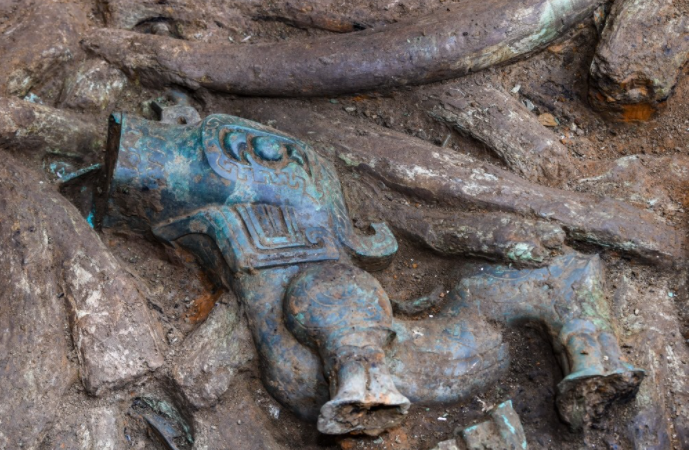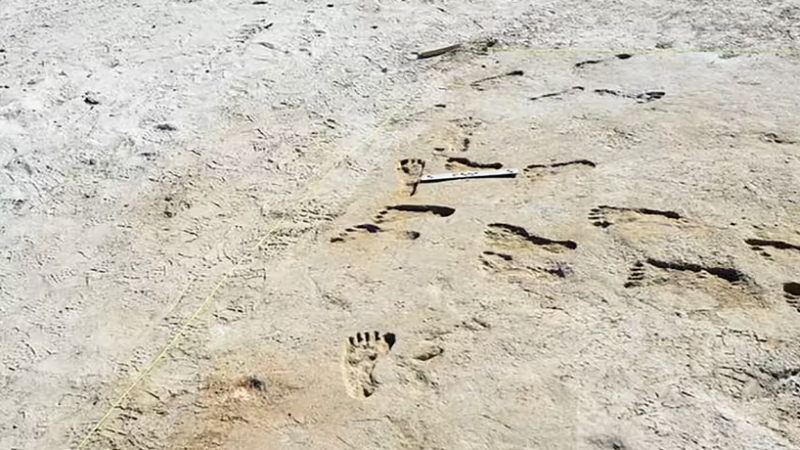Russian expedition finds evidence of Stone Age hunters

Russian expedition finds evidence of Stone Age hunters. Antiquated cut blemishes on mammoth bones uncovered on a far off island in the frozen limits of Siberia are the northernmost proof of Paleolithic people at any point found, as indicated by archaeologists.
Stone Age hunters
The bones from the wooly mammoth skeleton, dated to around 26,000 years prior, were exhumed this late spring by a Russian endeavor to Kotelny Island, in the furthest upper east of Siberia — 615 miles (990 kilometers) north of the Arctic Circle.
The group sorted out more than 66% of the skeleton — and they discovered cut checks and scores, made by stone or bone apparatuses, on pretty much every bone. That demonstrates the creature was purposely butchered, most likely after it was pursued somewhere near a traveling band of Stone Age hunters, the archeologists said.
It’s the northernmost proof of Paleolithic people at any point discovered, said undertaking pioneer Alexander Kandyba, a classicist at the Institute of Archeology and Ethnography at the Russian Academy of Sciences’ Siberian branch.
“This recommends that the northern line of human life in the Pleistocene was a lot toward the north of the by and large acknowledged thoughts,” Kandyba told, alluding to the Pleistocene age between 2.6 million and 11,700 years prior — the hour of the last ice age.

As of recently, the northernmost hints of Stone Age hunters came from the valley of the Yana River in the Yakutia locale of Siberia, and dated to somewhere in the range of 27,000 and 29,000 years prior, he said.
“The disclosure of this site makes it conceivable to move the northern line of the presence of old man and the advancement of the domain by him in the Pleistocene by right around 600 kilometers [370 miles] toward the north,” he said.
Mammoth bones
Kotelny Island is the biggest of the New Siberian Islands, which are situated between the Laptev Sea and the East Siberian Sea, around 150 miles (250 km) off the northern bank of East Siberia.
At the time the mammoth was killed, the ocean level was lower, thus Kotelny Island was joined to the central area. The environment was additionally milder, despite the fact that temperatures were still close or beneath freezing for the greater part of the year.
Archeologists recently tracked down the fossilized Stone Age hunters remaining parts of trees on the island, yet it’s excessively cold for them to develop there today. Kandyba’s group found the mammoth bones on Kotelny Island in 2019, however it was uniquely during the undertaking in July of this current year that they could be completely unearthed, he said.
The group didn’t discover any of the apparatuses that caused the imprints, however they tracked down an enormous number of ivory shavings and chips that demonstrated that antiquated individuals had cut into the mammoth tusks. They additionally discovered two ivory instruments produced using the tusks: a little spatula and an odd article that looks to some degree like a wiper; archeologists are as yet Stone Age hunters attempting to figure out what it was utilized for, Kandyba said.
From the bones, the archeologists gathered different signs about the way of life of the Stone Age trackers. For a beginning, obviously they chased mammoths, albeit different archeologists have recommended Paleolithic trackers might have stayed away from such enormous and risky prey for more modest creatures, like reindeer. “I think individuals chased a wide range of creatures around then,” Kandyba said.
There was no sign that the mammoth had been caught before it was killed — a technique a few archeologists propose such trackers might have utilized.
“The way that the skeleton of the mammoth was situated on the incline of an antiquated porch proposes that the creature was certainly killed in the outside, and not in a mud trap,” he said.
The discoveries from the most recent exploration on the mammoth skeleton and the proof that it was butchered by Stone Age people are currently being ready for distribution in a logical diary, Kandyba said.
Article you might like:







